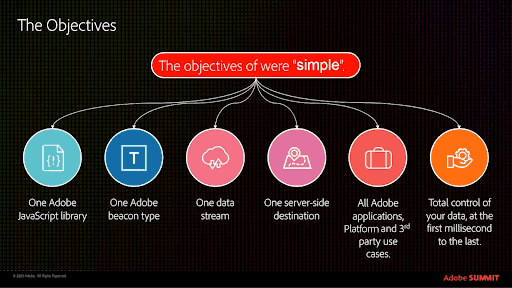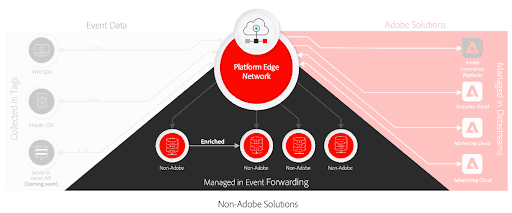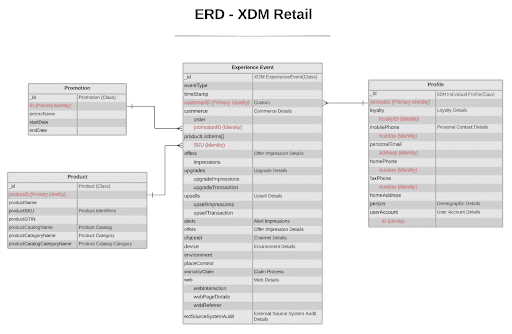Background
If you are an avid Adobe Experience Cloud developer/Practioner working with Adobe Analytics, Adobe Target, Adobe Campaign, etc., one widespread problem you must have encountered is the lack of a uniform way of collecting data across the solutions. Complicating things further, different solutions have separate ways of ingesting the data and use or share with other solutions. These problems arose due to the fact that these solutions were acquired by Adobe over a period of time and were gradually integrated.
To keep the web/mobile engagement & event data collection and storage uniform across the existing and evolving solutions (such as Customer Journey Analytics – CJA, Adobe Journey Optimizer – AJO, and Real-time Customer Data Platform – RTCDP), Adobe decided to invest in Adobe Experience Platform (AEP), which is essentially a Data Lake++, well suited for road digital marketing use cases in a real-time basis. So AEP is Adobe’s suite of products that allow for real-time personalization and user interaction.
This blog is going to discuss one of the foundational aspects of AEP, which is AEP Web SDK, a JavaScript SDK and tag extension that can dramatically simplify deploying Adobe technologies – especially those related to AEP.
New Terminology Updates First
AEP Launch (earlier Adobe Launch) is being integrated into AEP as a suite of data collection technologies. The UI in AEP that provides these capabilities has now been renamed as the Data Collection UI.
| Previous Term | Updated Term |
| Platform (Adobe) Launch (Client Side) | Adobe Tags (or Tags) |
| Platform (Adobe) Launch (Server Side) | Event forwarding |
| Edge Configurations | Datastreams |
AEP (with the help of its essential services like Tags, Event forwarding & Datastreams) is intended to aggregate and utilize user interaction data from every channel to create detailed user profiles (powered by RTCDP). AEP then uses artificial intelligence (pre-built and custom models) to evaluate real-time data to serve users unique and comprehensive experiences across every channel (e.g., using Target, AJO, etc.).
Ok, what is AEP Web SDK?
It is important to understand the objectives of why AEP Web SDK was built (see diagram):

Figure 1: Objectives of AEP Web/Mobile SDK Design
- One Adobe JavaScript library to replace four other legacy JS libraries (Visitor.js, AppMeasurement.js, AT.js, and DIL.js), which were used by different solutions
- Standard schema-driven way of sending data to one Edge Network, agnostic of use case or solutions (means not tagging for eVars, mbox, etc., but sending name-value pair, which is XDM). The data thus collected (on client-side) using XDM is then remapped and adjusted to the formats required by respective solutions and sent to those solutions (such as Adobe Target, Audience Manager, and Analytics besides the Platform itself) – all happening on the server-side.
- One server-side destination, managed by 1st party domain instead of many destinations and avoiding blocking calls, reduces client-side chatter.

Figure 2: Data Collection in AEP using Tags
What are schemas (XDM)
Standardization is a key concept behind the Experience Platform. Just like old school Entity Relationship Diagram (ERD) represents a standardized data model for different industries such as banking, insurance, retail, travel, etc., the same data modeling concept can be applied while defining schema model in AEP (the Platform). In Platform, you must construct the recommended schemas and their relationships yourself.
E.g., the following entity relationship diagram (ERD) represents a standardized data model for the retail industry. The ERD is intentionally presented in a de-normalized fashion and considers how data is stored in the Adobe Experience Platform.

Figure 3: ERD to XDM schema mapping in a Retail Industry for AEP
It's basically your way of telling Adobe the kinds of data that will be fed into AEP. Schemas ensure that data is mapped consistently across systems and/or platforms. Each platform will collect a variety of data – some of which will be unique to that platform, and some of which will have crossover with other platforms. It is important that each system recognizes and organizes the data, in the same way, mapping it to the corresponding values and locations in the other platforms.
When it comes to AEP Web SDK, schemas ensure that all the web event data follow the same standard. AEP Web SDK sends the data to the Platform Edge Network (see figure 2 above), which forwards it to the Adobe Experience Cloud platforms/solutions that are part of the AEP system. (See figure 2 above)
In AEP Web SDK, schemas use a structure called Experience Data Model (XDM). This format/structure is not unique to Adobe and is used across many different applications and industries to provide structure to data. Using a specified structure, like XDM, ensures that data comes into the system in such a way that it can be immediately organized and available to the system for processing or application.
Data intended for collection and use in Experience Platform (AEP) is grouped into two behavior
types:
- Record data: Provides information about the attributes of a subject (noun). A subject could be an organization or an individual (person)
- Time series data: Provides a snapshot of the system at the time an action (verb) was taken either directly or indirectly by a record subject (e.g., CTA, navigation events, download, view events, etc.)
The benefits of AEP Web SDK & why should you use it?
While one of the primary reasons to use AEP Web SDK is performance, there are actually several other benefits. AEP Web SDK can resolve timing issues among different Adobe products (e.g., segment sharing across Adobe Analytics and Adobe Target takes a lot of time currently).
Performance - AEP Web SDK is 80% smaller than current combined libraries and over 70% faster
Changing Technologies - The data collection edge uses your 1 st party domain, so it sets first-party cookies and IDs. It’s your data, and Adobe is just
Privacy – Consent is baked in from the start with new consent features and a new common Adobe privacy standard for the platform and all of Adobe’s applications
Simplify: This new process allows you to send a single stream of data in an easy-to-understand format to a single endpoint for all of your Adobe use cases
How to get started with AEP Web SDK?
- Do I have to purchase AEP/RTCDP to be able to use the AEP Web SDK?
Answer: No. Just like Adobe Launch is bundled with any of the Adobe Experience Cloud (AEC) solutions, AEP Web SDK is also provisioned with any of the AEC solutions. Additionally, using AEP Web SDK sets up your system to transition to AEP more easily down the road. Essentially, it allows you to have a faster setup now and provides you with additional capabilities in the future should you decide to implement AEP.
- What are the use cases for AEP Web SDK across the Adobe Experience Cloud Solutions?
Answer: Please refer to the link here
- Do I need AEP experts to implement AEP Web SDK?
Answer: No. You do not require AEP experts to be able to implement AEP Web SDK; but a good understanding of Adobe Launch (Tags), XDM & Datastream is needed to be able to map client-side data (and events) to XDM via Adobe Launch (Tags) using AEP Web SDK Extension.
For detailed FAQs, please refer to the link by Adobe.
While many other tools and aspects are part of an AEP implementation, AEP Web SDK is one of the
primary foundations of the platform. If you have questions about implementing Adobe Experience
Platform Web SDK (and AEP), please reach out to Axeno. We have a team of dedicated developers
trained in implementing Adobe's entire suite of analytics solutions, including AEP.

